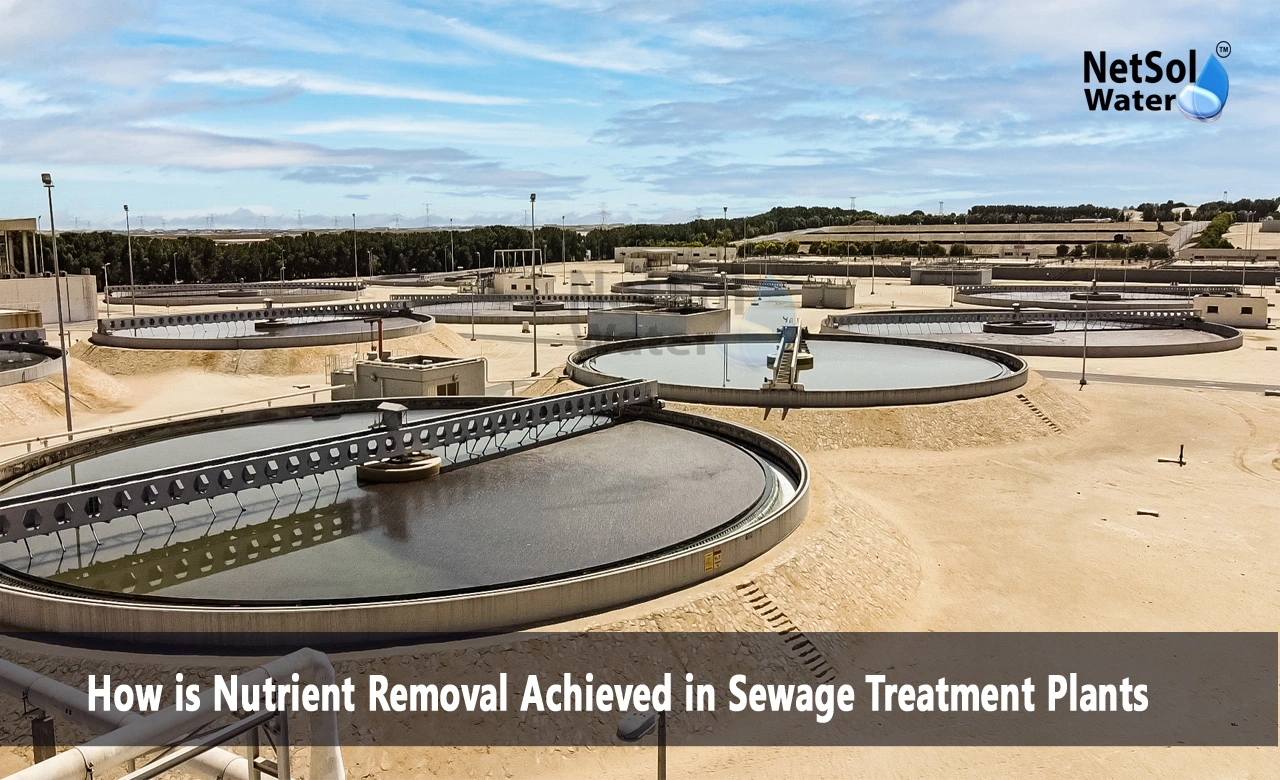How is Nutrient Removal Achieved in Sewage Treatment Plants?
Sewage treatment plants (STPs) play an essential role in treating wastewater to protect the environment and public health. While the primary focus is on removing conventional pollutants like suspended solids, organic matter, and pathogens, nutrient removal has emerged as an equally important process in modern STPs. Excessive nutrients, particularly nitrogen and phosphorus compounds, can lead to eutrophication and algal blooms in water bodies, disrupting aquatic ecosystems.
We will discusses the techniques employed in STPs for effective nutrient removal. So, lets start learning..
1. Biological Nutrient Removal
Biological nutrient removal is a widely adopted method that utilises microorganisms to remove nitrogen and phosphorus from wastewater. This process typically involves two stages: nitrification and denitrification.
Nitrification: In this stage, ammonia (NH3) present in the wastewater is oxidised into nitrite (NO2-) and then into nitrate (NO3-) by autotrophic bacteria in an aerobic environment. Efficient aeration is crucial for this process.
Denitrification: The nitrates produced in the nitrification stage are then converted into inert nitrogen gas (N2) by heterotrophic bacteria under anoxic conditions (absence of dissolved oxygen). This denitrification step requires the addition of a carbon source, often in the form of methanol or an external carbon source.
2. Chemical Nutrient Removal
In addition to biological methods, chemical processes can also be employed for nutrient removal, particularly for phosphorus removal.
Chemical Phosphorus Removal: This involves the addition of coagulants, such as iron or aluminium salts, to the wastewater. These coagulants react with soluble phosphates, forming insoluble residues that can be removed through sedimentation or filtration processes.
Advanced Nutrient Removal Techniques:
While BNR and chemical precipitation are widely used, some STPs incorporate more advanced techniques for enhanced nutrient removal:
a. Membrane Bioreactors (MBRs): MBRs combine a biological treatment process with membrane filtration, enabling higher biomass concentrations and more efficient nutrient removal.
b. Anammox Process: The Anaerobic Ammonium Oxidation (Anammox) process utilisesspecialised bacteria to convert ammonia and nitrite directly into nitrogen gas, eliminating the need for separate nitrification and denitrification steps.
c. Tertiary Treatment: Some STPs incorporate tertiary treatment processes like sand filtration, activated carbon adsorption, or reverse osmosis to further reduce nutrient levels in the treated effluent.
Importance of Nutrient Removal
Effective nutrient removal in STPs is crucial for several reasons:
1. Protecting water bodies: High nutrient levels can lead to eutrophication, depleting dissolved oxygen and causing algal blooms, which can harm aquatic life and disrupt ecosystems.
2. Water reuse: Treated effluent with low nutrient levels can be safely reused for irrigation, industrial processes, or groundwater recharge without contributing to nutrient pollution.
3. Regulatory compliance: Most regions have stringent discharge standards for nutrient levels in treated wastewater, and STPs must comply with these regulations to avoid penalties.
4. Environmental sustainability: Nutrient removal contributes to the overall goal of minimising the environmental impact of wastewater discharge and promoting sustainability.
Conclusion:
As environmental concerns and water scarcity issues continue to grow, it is important to remove nutrients effectively in sewage treatment plants. By employing a combination of biological, chemical, and advanced techniques, STPs can ensure that the treated effluent meets the required nutrient levels. This ensures the safeguarding of our water resources and the preservation of aquatic ecosystems.
To explore customised commercial RO plants, Industrial RO plants, ETP or STP solutions for your needs in your areas and nearby regions, contact Netsol Water at:
Phone: +91-965-060-8473, Email: enquiry@netsolwater.com



